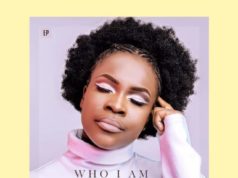10 most popular cult groups in Nigeria
Cultism remains a persistent issue in Nigeria, despite efforts by government and NGO to end their activities. It’s more in universities, polytechnics, colleges of education, and even secondary schools across Nigeria.
A cult group typically revolves around distinctive religious, spiritual, and philosophical ideologies, uniting its members through shared interests and objectives. However, some cults can be perilous, embracing secretive, esoteric, mystic, and violent practices.
See the list of top cult groups in Nigerian universities and their symbols
10 most popular cult groups in Nigeria
1.1 1. Pyrate Confraternity
1.2 2. Buccaneers Confraternity
1.3 3. Black Axe Confraternity
1.4 4. Supreme Vikings Confraternity
1.5 5. Supreme Eiye Confraternity or Air Lords
1.6 6. Mafia Confraternity
1.7 7. Black Bra Confraternity
1.8 8. Daughters of Jezebel
1.9 9. Deby Na debt
1.10 10. Kegite club
1. Pyrate Confraternity

Colors: Yellow, red, and black.
This is the oldest cult group in Nigeria, established in 1952 by Nobel Prize-winning author Wole Soyinka and his companions, including Aig-Imoukhuede, Pius Olegbe, Ralph Opara, Nat Oyelola, and Olumuyiwa Awe, all hailing from the University of Ibadan. Initially, their primary goals were to challenge conventions, revive chivalry, and promote elitism. Later known as the Sea Dogs, the group disbanded in the late 1960s, giving rise to a new collective known as Secret Cults. Soyinka has since denounced contemporary cult groups as malevolent and remains a member of the Pyrate Confraternity, which has shifted its focus towards humanitarian and charitable endeavors.
The cult’s emblem featured a skull, two crossbones, and an anchor. Their catchphrases included:
- “No Friend, No Foe”
- “Absolute no lagging”
- “Odas is Odas.”
Today, this group refrains from recruiting students and has distanced itself from violence.
2. Black Axe Confraternity

Color: Yellow
In Nigeria, the Black Axe Confraternity, often associated with fear, is recognized by its distinctive yellow color. Established in 1976 by students from the University of Benin, the group’s initial mission was to combat oppression faced by Blackman (students) in universities. Additionally, the Black Axe is known for its involvement in the fight against apartheid in South Africa, leading some to speculate that its founding members had connections to the Neo-Black Movement of Africa in South Africa.
The Black Axe’s symbol is an axe, and its members refer to themselves as Aye, Axe-men, Seven (7), or Amigos. They have several slangs, including:
- “The Blackman will be freed with an axe.”
- “No mistakes allowed.”
- “Forgiveness is considered a sin.”
- “Never betray your brother in the hood.”
- “Obey first, then voice concerns, or remain silent.”
- “He who sets the price must pay.”
The Black Axe Confraternity’s notoriety in Nigeria is due to its history of violence and criminal activities, making it a subject of concern for authorities and society at large.
3. Buccaneers Confraternity

The Buccaneers Confraternity, identified by its colors of white, black, and yellow, was established in 1972 when Bolaji Carew led a faction expelled from the Pyrate Confraternity. This offshoot, also known as the National Association of Sea Lords, grew even more influential than its parent cult. Buccaneers are renowned for their stringent academic and intellectual criteria, which are significant prerequisites for membership. Nevertheless, many students join out of fear of reprisals from rival cults such as the Black Axe and Pyrate Confraternity.
The group’s symbol bears a resemblance to the seadogs, and its members go by various names, including Fine boys, Ban Boys, Alora, Bucketmen, Lords, among others. Their catchphrases include:
- “No Price, No Pay.”
- “No brothers in the wood.”
- “No laughing on board.”
- “Blood for blood.”
- “Let the devil that leads you guide you.”
The Buccaneers Confraternity, known for its intellectual rigor, has a complex history and is one of the many secret societies that have left a mark on Nigeria’s campus culture.
4. Supreme Vikings Confraternity

The Supreme Vikings Confraternity, distinguished by its black and red colors, was established in 1982 by former members of the Buccaneers at the University of Port Harcourt. Originally known as the De Norsemen Club of Nigeria, the group’s symbol is SVC, represented by two crossed axes and a boat. Members identify themselves as Aro-mates, Adventurers, or Vultures and use these slangs:
- “Blood on the high sea.”
- “Songs of Hojas.”
- “Never hang a leg.”
- “Even in the face of death.”
The Supreme Vikings Confraternity is another example of a secret society with a presence in Nigerian campuses, known for its distinct symbolism and rituals.
5. Mafia Confraternity

The Mafia Confraternity, also known as the Family Fraternity or Cosanosyra Mafia Confraternity, and identified by the color purple, was established in 1978 at the University of Ilorin in Kwara State. However, it formally commenced its activities in Obafemi Awolowo University, Ile-Ife, in 1980. The group drew inspiration from Italian and American mafia ideologies. Members, who refer to themselves as Maf or Mafians, engage in secret gatherings, gambling, dating, maintaining secrecy, and espouse a belief in seeking revenge against oppression. They often derogatorily refer to non-members as “bastards.” Their catchphrases include:
- “It is better for a bastard to provoke a member than a numbered-bastard” (referring to members of other cults).
- “Retaliation after oppression.”
- “Secrecy is where our power lies.”
The Mafia Confraternity’s origins and practices are rooted in secrecy, and it’s another example of the complex and secretive world of campus cults in Nigeria.
6. Supreme Eiye Confraternity or Air Lords

The Supreme Eiye Confraternity, recognized by the color blue, was established in 1963 by University of Ibadan students. It is also known as the Air Lords or HABA-KRIER. The primary goal of the group was to foster positive development in its members, encompassing social, political, cultural, physical, and mental aspects. Members typically maintained an indifferent stance towards other cult groups. Their symbol features a landing eagle, and they identify themselves as Fliers, Airforce, Airlords, among other names. Their catchphrases include:
- Secrecy
- Autocracy
- Discipline
- Brotherhood
- “No friend, no foe.”
The Supreme Eiye Confraternity aimed to promote personal growth and development among its members, differentiating it from some of the more notorious cults in Nigeria
7. Kegite club

Colors: Green
The Kegite Club, often associated with the color green, is considered by some as a sociocultural group rather than a cult. It primarily focuses on promoting unity in diversity and the revitalization of the mind, body, and soul after a challenging day. Members of this group frequently engage in the consumption of palm wine as part of their traditions. They maintain a strong commitment to authenticity and uphold the belief that everyone is equal. The Kegite Club is generally regarded as a benign organization that eschews negativity. Their symbol, a green palm tree, is symbolic of their identity, and their motto states that “the basis of African unity and world peace is palmwine.
8. One Million Boys
The “One Million Boys” was originally formed in Ajegunle by a group of approximately 20 boys with the initial goal of combating perceived injustices in the city. However, over time, certain members of the group diverted its purpose, leading it to become involved in criminal activities such as robbery, rape, and acts of violence. The One Million Boys cult group became popular when Portable claimed to have founded the group in which the police launched an investigation at the end of the day it turns out it was just cruise by Portable.
9. Black Bra Confraternity

Color: Black
The Black Bra Confraternity, also known as the Neo Black Queen of Africa, stands as one of the oldest female cult groups in Nigeria. This organization focuses on promoting the development of women of color, and its members traditionally don black attire from head to toe. The group’s emblem is represented by a black bra.
10. Deby Na debt

Color : Black and white
Deby Na Debt, also known as the Eternal Fraternity Order of Legion Consortium, draws inspiration from a cult in California, USA, where members are called the Klansmen. In this group, members revere a demon known as Ogor and pledge loyalty through oaths. They hold the belief that they are superior to other cult groups in Nigeria. The symbol associated with Deby Na Debt is a human skull, and their distinctive slangs include:
- “The affairs of a Klansman come before anything else in life.”
- “What concerns one Klansman concerns all Klansmen.”
- “The status of other cult members is not considered or relevant.”
- “An oath of secrecy binds all members.”
- “A peaceful man in a deadly mood; we disagree to agree.”
Deby Na Debt is one of the many secretive and distinct cult groups found in Nigeria, characterized by its unique rituals and beliefs.
It’s clear that many of these cult groups were initially founded with what could be seen as noble intentions, such as promoting camaraderie, addressing injustices, or fostering personal development. However, over time, many of these groups have deviated from their original objectives and have become associated with violence, criminal activities, and political manipulation.
The misuse of these cults by unscrupulous individuals, including politicians, for their own agendas has further exacerbated the problems associated with these groups. It’s a troubling trend that has led to violence, killings, maimings, and destruction.
In response to these issues, it’s commendable that some organizations like Soyinka’s Pyrates have chosen to shift their focus towards humanitarian services rather than recruiting more youths into these cult-like groups. This redirection towards positive and constructive endeavors can help mitigate the negative impact of such organizations on society. However, addressing the root causes and working collectively to discourage the growth of these cults remains a significant challenge for Nigerian society.


 ADVERTISE WITH US. Call or send a Whatsapp message 08070950313
ADVERTISE WITH US. Call or send a Whatsapp message 08070950313


 ADVERTISE WITH US. Call or send a Whatsapp message 08070950313
ADVERTISE WITH US. Call or send a Whatsapp message 08070950313






